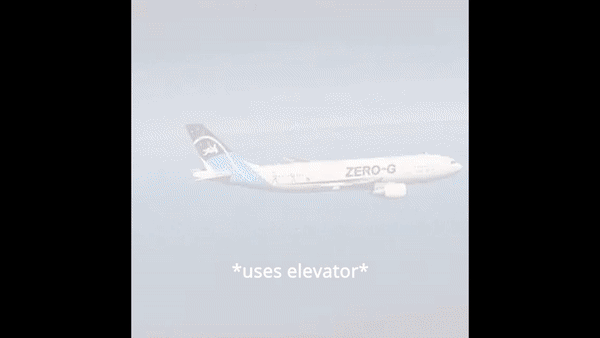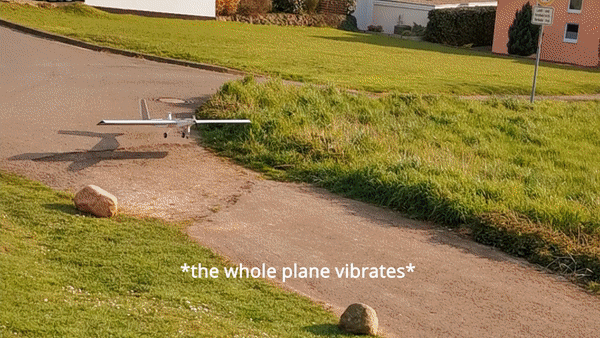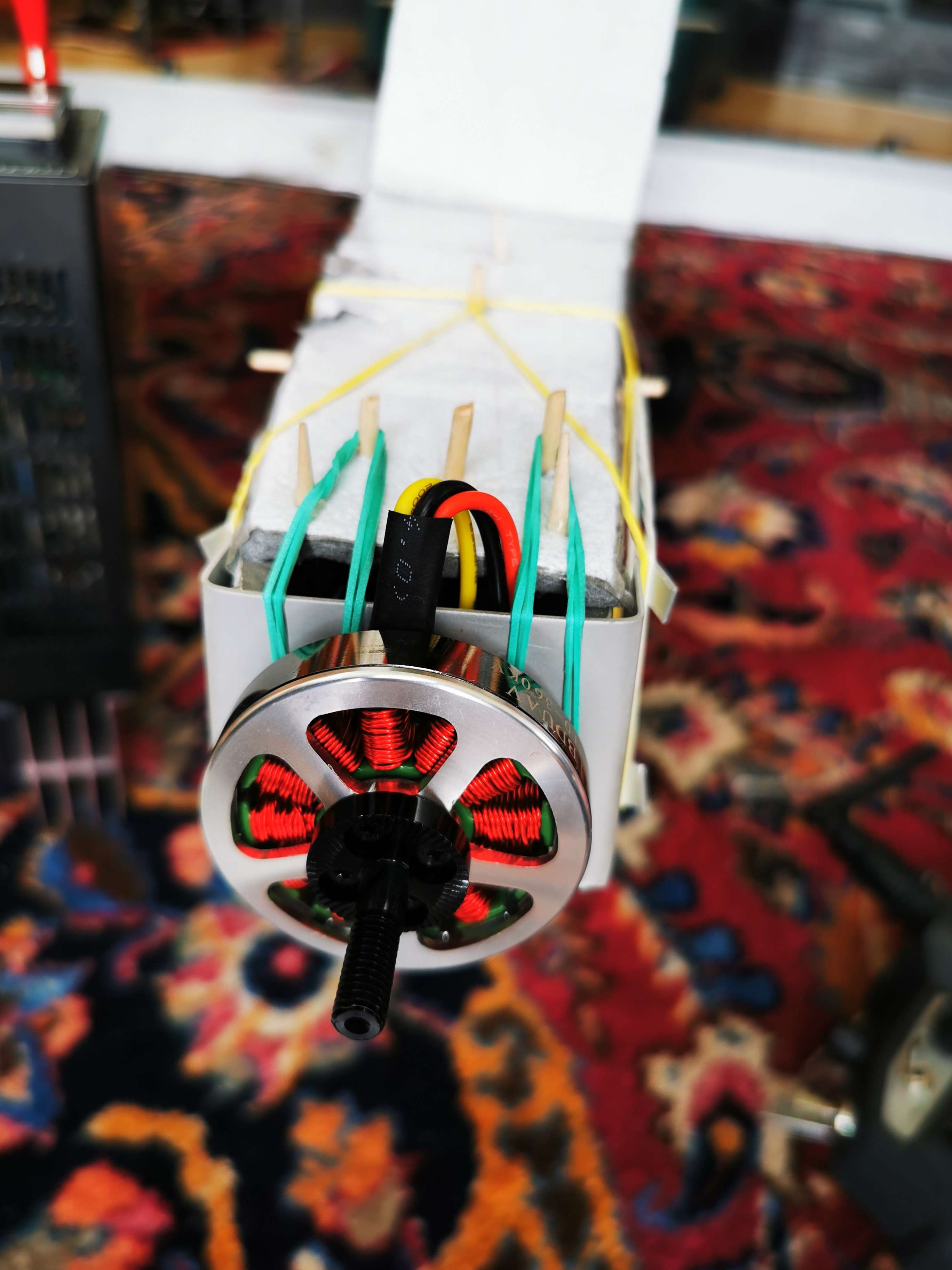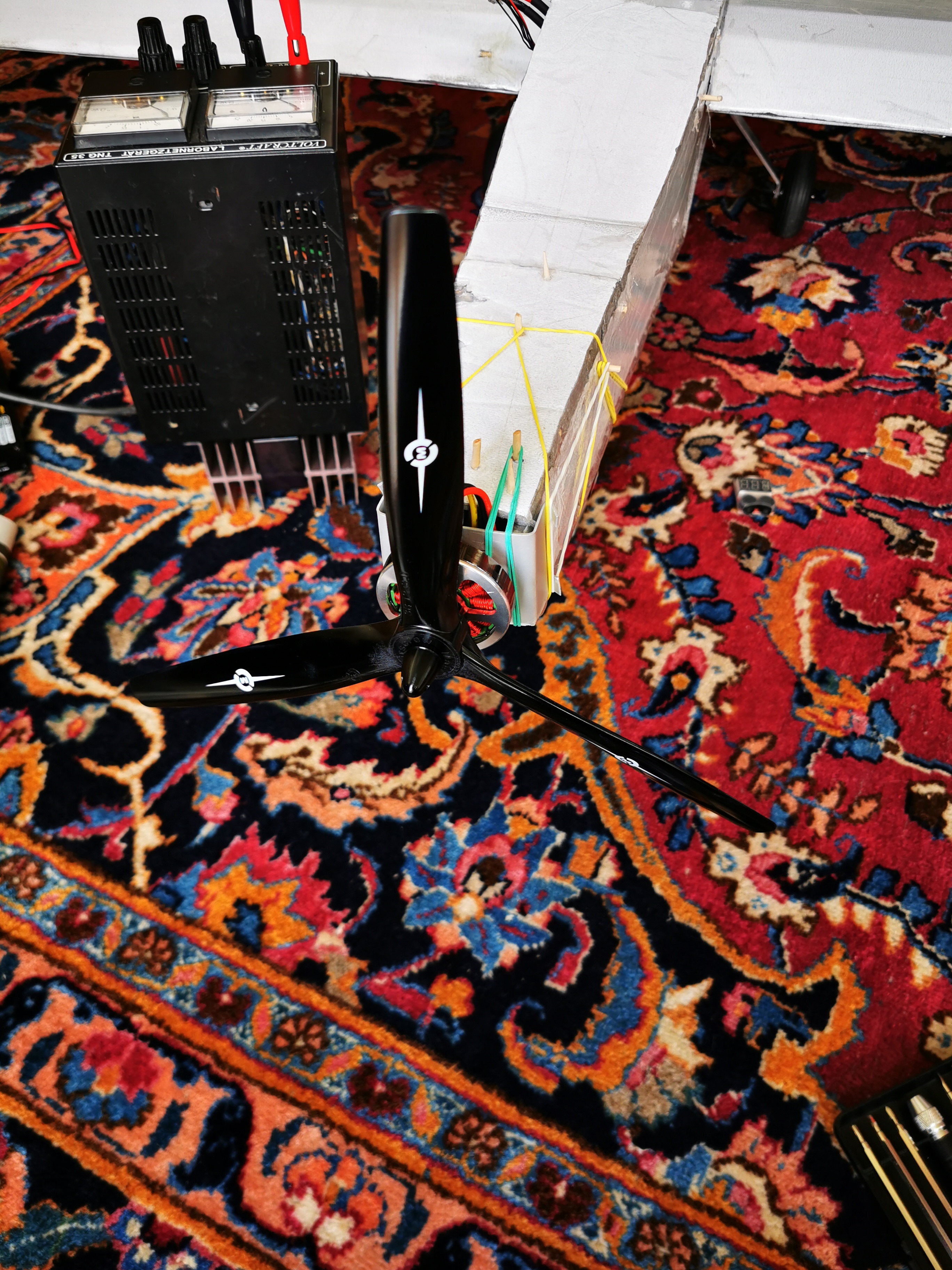Autonomous
This chapter deals with all the crashes on the way to the final sucessfull autonomous flight. It took me a total of four attempts. I had to deal with a few setbacks, ranging from wrong configurations to stupidity.
Let's start with the first and scariest of the flights.
1. Parabolic flight#
Everything seemed to be ready for the first test flight and I felt confident to make a first start. I had seen some "weird" elevator behavior once before, but either didn't think anything of it or simply forgot about it. Lets just get going !

Flight Mode :
STABILIZEWind: A little too much, but I can not wait for less
Let's start with the positive things. The propulsion from the engine is definitely enough for takeoff and accelerates the plane sufficiently.
After I slightly pitched the elevator, the duck rose almost vertically. A correction by pitching the elevator leads almost to a nosedive. The whole thing then started all over again until I finally managed to bring the airplane down in a half crash landing that destroyed the landing gear. During this flight I broke it the first time.
It was pretty obvious, that the elevator was probably not working quite right.
When you move the elevator up Ardupilot will correct the the steering in STABILIZE mode with respect to the position of the aircraft.
If it pulls up too far, this movement is corrected by moving the elevator down. In my case this correction was inversed.
This caused a parabolic flight.
I inverted both the throttle and the PWM output, so that the controller now countersteers correctly.
2. Vibration#
After the Stablelizer was properly configured and the landing gear was put back in place, I went for the first test with propper configuration.
This time with new flight modes. I selected FBWA and prepared for takeoff. Again, everything seemed fine.

Flight Mode :
FBWAWind: A little too much. Again, I can not wait for less

At liftoff I noticed that there is some kind of vibration at a certain rpm of the motor. I totally ignored that and added more thrust, s.t. the vibration hopefully becomes less. It worked. At least for some seconds.
After about 15 seconds of flight, I heard a cracking sound and suddenly the plane went silent.
The screws of the engine have loosened by the vibration whereby they finally detached the motor from the front. However, as it was still connected to the aircraft by the cables and the motor continued to accelerate, the propeller hit holes in the nose of the aircraft several times. In addition, the cables became so twisted that they tore off.
I will use locktite on the screws for the next start attempt and balance the propeller so that on the one hand the motor is better connected to the mount and on the other hand the vibration itself is reduced. Since I need a new motor, I also decided to buy one with a lower kv and several larger rotors, since I can only roughly estimate the thrust I need. This led to the next try.
3. Missing thrust#
After the two motors arrived from amazon and hobbyking, I had these two options. A very powerful motor with high speeds and a slow turning motor with high torque.


Flight Mode :
FBWAWind: A little too much.
I might opt for the Turnigy high KV motor and install a small propeller. Since I was afraid that the vibrations would come back with these high RPM motors, I first tried to mount the 5010-360. In order to still have enough thrust I choose the large rotor I got, a 12x8 3-Blade prop from Meister Airscrew.
It turns out that the current engine either has too little thrust or too much weight towards the nose. Even with a full throttle, I couldn't get the duck to lift into the air.
I just picked the stronger motor with 420W and 1300 rmp/V and accept that the flight time might not be as long as it could be. Since this motor has almost too much thrust, I also replaced the 2200mah Lipo from turnigy with a 5000mah. Another solution would have been to order an even larger rotor. However, I think I am already at the maximum.
4. Success#
Finally I managed to take off and fly a couple of rounds autonomously. After breaking the landing gear multiple times during the last tests, I descided that the current setup is not stable enough to survive an other landing and redesigned the landing gear. I moved the front wheel to the back and the two large wheels a little more to the nose. Also the thrust issue should be solved by using the 1300kV-420W motor with a 9x6 prop. To increase the possible flight time I also added the 5000mah Lipo.
Flight Mode :
FBWAWind: None
The start was without anly problems. After gaining a little altitude, I turned on the auto mode and the plane flew stable through the waypoints.
Flight logs#
I added the flight logs here. This is the telemetry data that was sent by the aircraft during the testflight.
To extract this data you need to read the tlog-files using MissionPlanner. You can convert these files into CSVs if necessary.
Feel free to use my script incide the scripts folder, that I used for the data analysis.
Next steps#
The last test flight marks the completion of a major milestone in autonomous flight. The waypoint mission works flawlessly. The next step, however, is for the duck to land on its own. For this, I will evaluate Lidar sensors and configure Ardupilot. To charge the battery sufficiently I also need to determine the required power of the solar cells.
Solar power calculation#
Using the telemetry logs I estimated, that around 1,5-2 ampere is used during the waypoint mission. I will need
to turn the duck into an autonomous flying plane. Read about the solar build in the next section